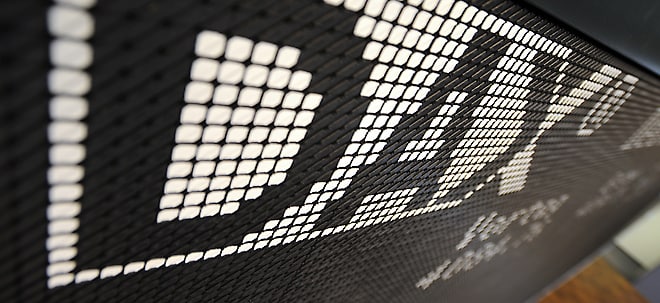Harness Report Reveals AI Velocity Paradox: Productivity Gains Undone by Downstream Bottlenecks
Nearly three-quarters of organizations report experiencing production incidents caused by AI-generated code
SAN FRANCISCO, Sept. 30, 2025 /PRNewswire/ -- Harness, the AI DevOps Platform™ Company, today released a new study revealing the AI Velocity Paradox: while AI is making developers faster, bottlenecks are shifting downstream into testing, deployment, and security. The result is greater risk, rising costs, and slower delivery.
The State of AI in Software Engineering 2025 – based on responses from 900 engineers, platform leaders, and technical managers across the United States, the United Kingdom, France, and Germany – shows that:
- AI is speeding up code creation: 63% of organizations report shipping code faster since adopting AI.
- But problems multiply downstream: 45% of deployments involving AI-generated code lead to problems, and 72% of organizations have already suffered at least one production incident caused by AI-generated code.
- Security risk is top of mind: Nearly half (48%) of leaders expect AI to increase software vulnerabilities, while only 41% are fully confident their governance protocols can reliably catch issues before reaching production.
- Cloud costs are at risk of spiraling: 70% worry inefficient AI-generated code will drive uncontrolled cloud cost overruns.
- Tool sprawl is worsening productivity: On average, development and engineering teams use eight to ten distinct AI tools, while 36% of respondents juggle even more, and 71% say context switching between them drains productivity.
- Automation is lagging: Only 6% describe their continuous delivery process as fully automated – yet moving from low to moderate CD automation more than doubles the likelihood of realizing velocity gains as it rises from 26% to 57%.
- Developers are bracing for the fallout of vibe coding: 63% say vibe coding is "a disaster waiting to happen," overwhelming skilled engineers with downstream rework.
- Leaders agree on the fix: 83% say AI must extend across the entire software delivery lifecycle to unlock its full potential.
"The AI Velocity Paradox is real. Teams are writing code faster, but shipping it slower and with greater risk," said Trevor Stuart, SVP and GM at Harness. "Without automation in place, productivity gains at the front end are erased by downstream bottlenecks – more bugs, higher cloud costs, and greater security exposure. To truly benefit from AI, enterprises need to extend it beyond code creation into testing, quality, and deployment. That's how you turn speed into lasting advantage, delivering software that is faster, safer, and more resilient."
The Downstream Danger Zone
The report underscores the risks organizations face if they don't rebalance their AI strategies:
- 73% warn that unmanaged AI assistants could significantly widen the blast radius of failed releases.
- 74% believe companies that fail to integrate AI safely and securely across their SDLC in the next year will "go the same way as the dinosaurs."
Escaping the Paradox
The findings make one thing clear: AI's promise will not be realized without changes downstream. While coding has accelerated, delivery has not – and the resulting gaps are creating risk, rework, and wasted spend.
For leaders, escaping the AI Velocity Paradox requires rebalancing AI investment downstream. The report highlights three priorities for organizations to focus on:
- AI's speed is real – but fragile without downstream automation. Many organizations are stuck in the "Danger Zone": high AI use for coding but immature testing, deployment, and governance. Leaders should pair AI coding assistants with automated testing, deployment verification, and security checks to prevent risk, cost overruns, and manual toil.
- Automation maturity is the true velocity driver. The biggest performance gap is not in code creation but in delivery. Continuous delivery and governance remain under-automated. Leaders should invest in downstream automation to translate AI-driven code velocity into business velocity.
- Tool sprawl and vibe coding amplify operational risk. Fragmented toolchains and inexperienced developers utilizing AI assistants are creating governance challenges, increasing incidents, and incurring hidden costs. Leaders should consolidate tools into a unified platform and establish AI-powered guardrails to reduce complexity and keep teams focused on innovation.
"Harness is building this foundation today," added Stuart. "By applying AI across the entire delivery lifecycle, we help enterprises escape the paradox and free developers to focus on innovation instead of rework."
To learn more, download the full State of AI in Software Engineering 2025 report here: https://www.harness.io/the-state-of-ai-in-software-engineering
About The Research
This study is based on a survey of 900 engineers, platform leaders, and technical managers from the United States (500), the United Kingdom (200), France (100), and Germany (100), conducted by market research firm Coleman Parkes in August 2025.
About Harness
Harness is the AI DevOps platform for complete software delivery. It provides a simple, safe, and secure way for engineering and DevOps teams to release applications into production. Harness uses AI and machine learning to monitor the quality of deployments and automatically roll back failed ones, saving time and reducing the need for custom scripting and manual oversight, giving engineers their nights and weekends back. Harness customers like United Airlines, Citibank, and Choice Hotels accelerate deployments by up to 75%, reduce infrastructure costs by up to 60%, and decrease lead time for changes by up to 90%. Harness is based in San Francisco and is backed by industry-leading investors like Menlo Ventures, IVP, Unusual Ventures, and Citi Ventures.
![]() View original content to download multimedia:https://www.prnewswire.com/news-releases/harness-report-reveals-ai-velocity-paradox-productivity-gains-undone-by-downstream-bottlenecks-302570962.html
View original content to download multimedia:https://www.prnewswire.com/news-releases/harness-report-reveals-ai-velocity-paradox-productivity-gains-undone-by-downstream-bottlenecks-302570962.html
SOURCE Harness


